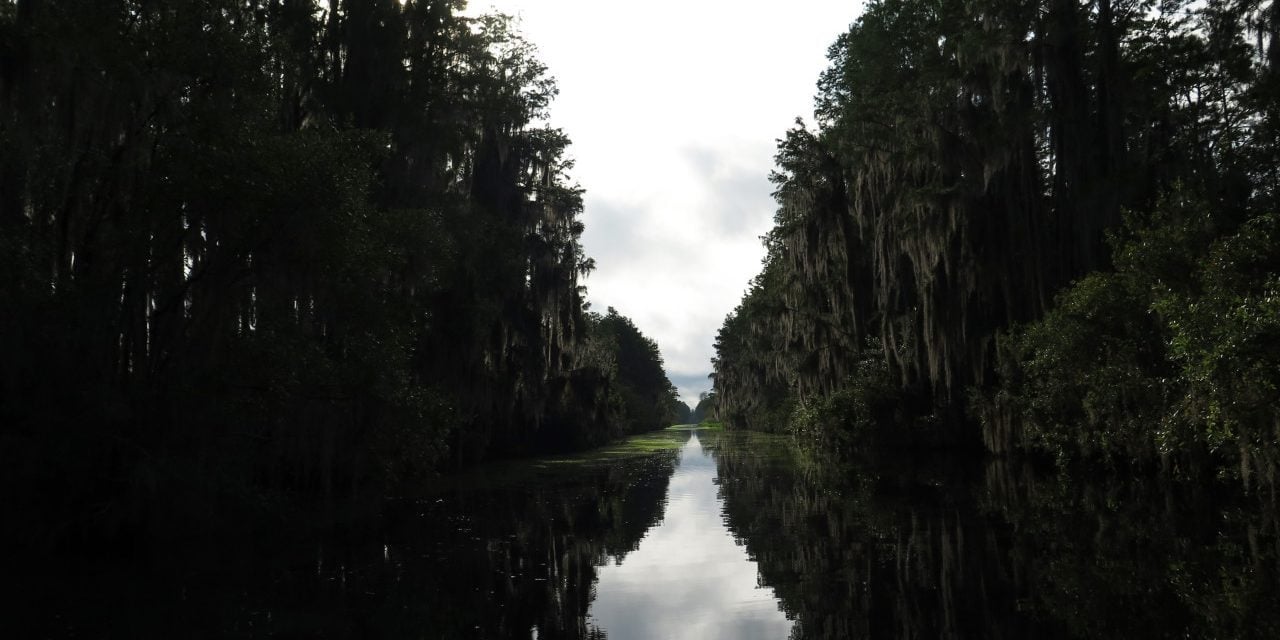Scientists decry mining plan near Okefenokee

Emma Hurt / WABE
This coverage is made possible through a partnership with Grist, a nonprofit, independent media organization dedicated to telling stories of climate solutions and a just future.
More than 40 scientists are speaking out against a plan to mine heavy minerals near the Okefenokee National Wildlife Refuge. The state Environmental Protection Division is considering permits to allow the mine.
The controversial mining project could bring much-needed jobs to rural Southeast Georgia. But its many opponents say the mine would harm the beloved swamp.
The mining company Twin Pines has touted a study it funded showing minimal impacts to the Okefenokee, but dozens of scientists questioned that research in an open letter.
Science for Georgia Vice President Amy Sharma said the swamp is great at filtering toxins from the environment. She said mining would lower the water level.
If the water drops, even temporarily, “what will happen is all of that, those absorbed toxins that it filtered out of the water will go back into the water,” Sharma said. “All of the absorbed carbon that it absorbed will go back into the air.”
Twin Pines asked to see studies backing up the open letter. Company president Steve Ingle issued the following statement:
We are interested in seeing the scientific studies behind this group’s collective point of view. Did they do any? All of the so-called studies by opponents we’ve seen to date have been nothing more than flimsy, results-oriented efforts. We have done extensive modeling and studies by top hydrologists which have been extensively peer reviewed.
Until we have their science to review, we will classify this as more hysteria and not an educated perspective. The land upon which we will be working is about three miles away from the edge of the refuge. Sand that is lifted from the earth is essentially sifted and replaced within a few days. The mined property will be replanted with native shrubs and trees and placed into conservation.
Activists and the scientists’ open letter dispute that the Twin Pines studies have been “extensively peer reviewed.”
In their letter, the scientists wrote that most of them have experience studying the Okefenokee.
“As members of the scientific community, we are in no position to opine on the ultimate question – whether the mine is in the best interests to the people of Georgia; however, we are sufficiently familiar with the environmental complexities of the region, including the water system and the geology, that we are compelled to voice our concerns about the environmental impacts of this mine,” the scientists wrote.
Their chief concern is the proposed mine’s proximity to Trail Ridge, a geological feature that acts as a kind of natural dam. The scientists contend that disrupting the layered soil on the ridge would affect how the water underground behaves and, in turn, affect the water level of the swamp.
Sharma acknowledged that she and her colleagues had not done the complex hydrologic surveys and modeling that would be required to determine the precise impact — in other words, how much the water level might drop or change. But she said any change could lead to the harmful effects they’re worried about.








